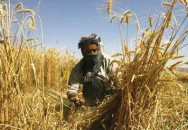RDA: capitalising on opportunity
In many cases, expatriate Pakistanis diverting savings to RDA only for short term

In the current situation of heavy indebtedness and mounting debt servicing, Pakistan opts for another short-term foreign borrowing at the rate of 7% (while other foreign loans are acquired at 2-3% rate).
At the same time, in a global economic slowdown, small investors find an opportunity to get a return of 7% in US dollar. Interestingly, both of these oddities are combined through the Roshan Digital Account (RDA) scheme of Pakistan.
The idea behind the RDA is not bad but the execution is hard to comprehend.
If the intention of the government is to bank on the patriotism of expatriate Pakistanis who, in return, are willing to contribute to the development of Pakistan, then it can surely come at a much lesser cost than 7% on US dollar and 11% on Pakistani rupee.
One needs to dig a little further than the headlines and statements around the success of RDA.
Let us start with finding the reason of why the RDA scheme was announced. Was it to facilitate the transfer of money back home from expatriate Pakistanis? Or was it to channelise such money to the long-term development goals and initiatives in Pakistan.
In fact, none of that appears to be the case. Rather, the most important outcome one can witness is showing RDA inflows to stabilise foreign exchange reserves.
On the other side, the expatriate Pakistanis (or probably some others, indirectly, as well) are banking on this unique opportunity to earn returns at 7% and 11% on US dollar and Pakistani rupee respectively that is not available probably anywhere else.
In most of the advanced countries, even a 3% return is considered high, therefore, if you get 7%, why would one not capitalise on such an opportunity.
What is happening, in many of the cases, is that expatriate Pakistanis are diverting their savings to the RDA but on a short-term basis, less than one year, and rarely would one find a long-term investment in the RDA, specifically the Naya Pakistan Certificates.
In some cases, the RDA account holders have borrowed money at lesser interest rates, which is quite common in advanced economies, and invest that in the RDA and profit on the gap between the interest paid (often around 2-3%) and interest earned (7%).
A good short-term profiteering scheme, as one expatriate Pakistani put it. One would even hear stories that many Pakistan-based investors are channeling their money through expatriate Pakistanis having RDAs and earning 7% on a US dollar basis.
The RDA holder will be given due share for providing patriotic services. Someone hinted at having a look at a certain percentage of foreign exchange that Pakistani exporters can keep outside, is it not better to earn 7% on those dollars rather than close to zero if these are kept in foreign bank accounts.
Moving on to another dark side of the RDA, let us assume that there is an economic panic created due to one reason or the other.
The immediate fallout could be evaporation of this $2 billion plus from Pakistan, as it is guaranteed that such money could be taken out at any point in time.
Moreover, what if there is a different government tomorrow and it does not find the RDA scheme appropriate and put a freeze or restriction on such accounts, how would such a disruption be managed.
It is time to think calmly about such eventualities, ensure transparency in utilisation of RDA inflows and assess the risks associated with such investments, and more importantly, how could such an idea be implemented in a better way.
If the RDA is a response to recognise the patriotism of Pakistanis, then let us do it by floating long-term Pakistan Development Bonds, with 10-year maturity at the rate of 2%, quite in sync with the current international practices.
In this case, the state would not be overburdened with the price of patriotism.
Utilisation of inward remittances is the real issue that we need to focus on. As they are touching $30 billion per year, even 10% of such remittances channeled and invested in long-term development initiatives or projects could be a game changer, rather than borrowing $3 billion at the rate of 7% through the RDA.
May I propose a scheme named “Pakistan Development Fund”, whereby the expatriate Pakistanis could allocate a certain portion of their remittances, at a reasonable and market-oriented rate of return, and for long term, ie 10 years.
This Fund would be utilised only for long-term development projects or initiatives such as construction of dams or similar strategic infrastructure. There would be a real sense of contribution to the development of Pakistan and also a check against short-term profiteering and rent-seeking behaviour.
The existing situation in the RDA is hard to describe in any words other than short-termism, on both sides.
Though the long-termism is long gone in economic policy and management in Pakistan, commentators like me would continue to call for it, in the short, medium and long term, until we get there.
The writer is an international economist
Published in The Express Tribune, November 8th, 2021.
Like Business on Facebook, follow @TribuneBiz on Twitter to stay informed and join in the conversation.



















COMMENTS
Comments are moderated and generally will be posted if they are on-topic and not abusive.
For more information, please see our Comments FAQ